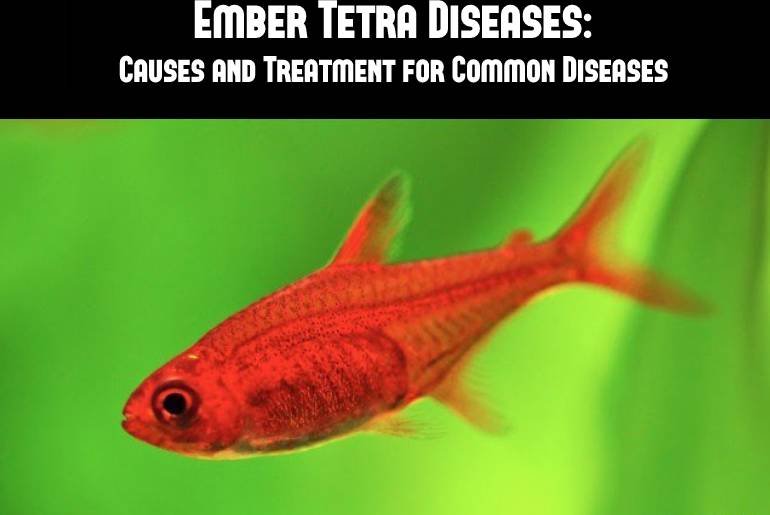
In this guide, we’ll dive deep into some common health problems that tetras may face, how you can spot these issues early, and effective treatments to get your fish happy and swimming again. It’s all about creating the best environment and responding promptly when something feels off. Plus, we’ll share some handy tips to keep your school of tetras healthy so you can enjoy their vibrant swim.
Recognizing Signs of Illness in Tetra
To help your tetras flourish, it’s crucial to know the signs that something might be wrong. These fish can’t just tell you when they’re feeling poorly, so paying close attention to their behavior and appearance is vital. It’s a bit like being a detective—observing for clues.
Some common signs of illness include:
- Changes in swimming patterns: If your tetras are darting around erratically or hiding more than usual, that could be a red flag.
- Physical changes: Look for signs like white spots, frayed fins, or discoloration. These can indicate various health issues.
- Loss of appetite: If your tetras suddenly stop eating, it’s time to investigate. Fish usually love food, so this is a clear warning sign.
By keeping a watchful eye on your school, you can catch potential problems early on, making a big difference in their health and well-being.
Common Tetra Diseases: Ich (White Spot Disease)
One of the most notorious health problems tetras face is Ich, often referred to as White Spot Disease. It’s an irritating condition that pops up when fish are stressed or the water quality is poor. The little parasites latch onto your fishes’ skin, looking like tiny grains of salt.
If you notice your tetras flashing against objects or rubbing their bodies against the tank, they might be trying to soothe themselves. Treatment typically involves raising the water temperature and adding a medicated treatment specifically for Ich. It’s like giving them a warm bath with a bit of medicine to help them recover.
Make sure to maintain excellent water quality and avoid overcrowding your tank. This prevents stress and makes it less likely they’ll get sick in the first place.
Fungal Infections: How to Spot and Treat Them
Fungal infections can also rear their ugly heads in tetras. These infections often appear as fuzzy white patches on the fish’s body or fins. Think of it as a sort of “mold” for fish. The culprit is usually poor water conditions or injuries, which give the fungus a chance to take hold.
If you spot a fuzzy patch, it’s time to act fast. You can treat fungal infections with antifungal medications designed for aquarium use. Make sure to follow the instructions carefully. Changing a portion of the water can also help get rid of any spores floating around.
Keeping your tank clean and monitoring your fish’s health can go a long way in preventing these pesky infections.
Fin Rot: What It Is and How to Fix It
Fin rot is another common issue that often affects tetras. This condition usually stems from poor water quality, stress, or injuries. You might notice the edges of their fins starting to fray or look shredded, which can be pretty alarming.
To treat fin rot, start by improving the water conditions and performing regular maintenance on your tank. You can also use antibiotic treatments available at pet stores, targeting bacterial infections. It’s a bit like putting a band-aid on a cut; without clean surroundings and proper care, the issue might just get worse.
As a preventative measure, ensure your tetras have plenty of swimming space and a stress-free environment. Healthy fish are happy fish!
Swim Bladder Disorder: Understanding and Treatment
Swim bladder disorder is a common issue in tetras and can leave them swimming in circles or struggling to stay upright. This condition affects their buoyancy control and can be caused by overfeeding, constipation, or even genetics.
If you suspect swim bladder disorder, trying a feeding routine that focuses on quality over quantity can help. Floating pellets or blanched peas are often recommended to help clear things up. Just think of it as switching to a healthier diet to get back on track!
If the issue persists, consider adjusting the water quality and temperature, as sometimes environmental stressors can also trigger this problem.
Preventative Measures for a Healthy Tetra Tank
Keeping your tetras healthy starts well before any illness strikes. It’s all about creating a stable, clean environment that mimics their natural habitat. Here are a few key tips to keep your tank thriving:
- Monitor water conditions: Regularly test your water for ammonia, nitrite, nitrate, and pH levels.
- Perform regular maintenance: Change at least 10–15% of the water weekly to keep it clean.
- Avoid overfeeding: Stick to a feeding schedule and only give them what they can eat in a few minutes.
Creating a balanced ecosystem in your tank can make a world of difference, helping your tetras fend off illnesses before they even start.
When to Seek Professional Help
Sometimes, despite your best efforts, health issues arise that require more than just home treatment. If your tetras show persistent symptoms or their health seems to be declining rapidly, consulting a vet who specializes in fish can be a lifesaver.
Bring along any information you have about their symptoms, tank conditions, and recent changes. This way, the vet can give you a more accurate diagnosis and tailored treatment options. Remember, it’s always better to ask for help sooner rather than later!
In conclusion, by keeping a close eye on your tetras, maintaining a clean environment, and being proactive about treatment, you can ensure a happy, healthy home for your fish. It’s a rewarding journey, watching your little swimmers thrive!

